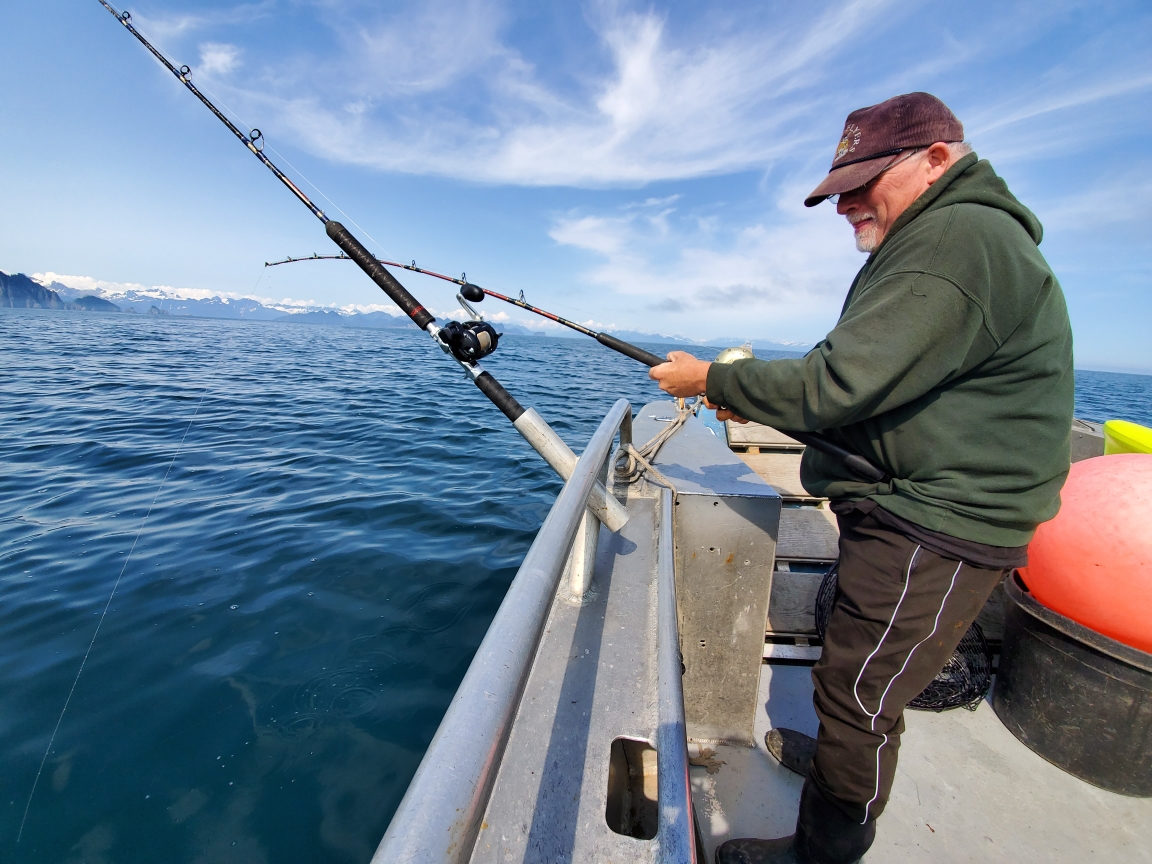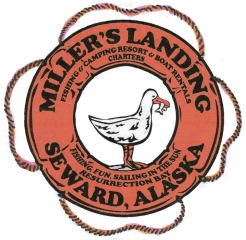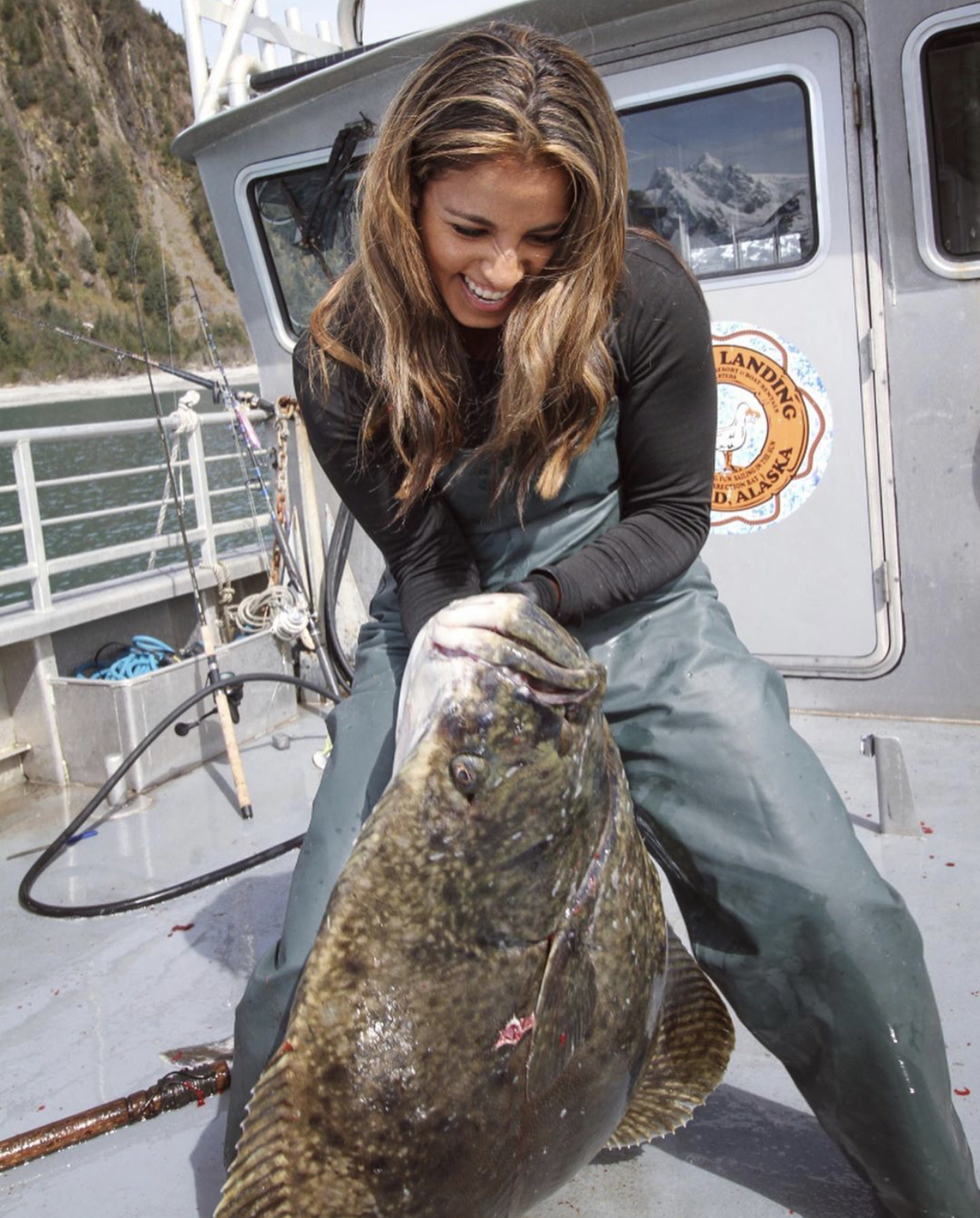What to expect for 2020 – Halibut Fishing Regulations in area 3A South Central Alaska
Update: 3/9/20
As of 2/7/20, the International Pacific Halibut Commission (IPHC) adopted catch limits for the charter sector as follows:
Area 2C (Southeastern Alaska i.e. Ketchikan, Juneau, Sitka): One halibut daily bag limit, reverse slot limit: Less than or equal to 40 inches, or greater than or equal to 80 inches.
Area 3A (South Central Alaska i.e. Seward, Homer, Valdez): Annual limit of 4 halibut per charter angler, 1 halibut charter trip per vessel per day, Tuesdays and Wednesdays closed to halibut retention all year, 2 halibut daily bag limit with one fish of any size and the second fish if retained must be less than or equal to 26″.
At Miller’s Landing we closed our availability for halibut charters on Tuesdays in early December – these rulings made in February didn’t affect a single existing booking for the new year. These regulations are only applied to guided anglers on charter vessels, private anglers can harvest 2 halibut per day of any size with no annual limit and no closure days. We only have to mark your license for a retained halibut if you’ve harvested aboard a guided sport fishing charter. Read below the article posted 12/17/19 for some more details on the why and how, if you are planning to go fishing, this may be the year to do it as it’s nearly certain that increased regulations will be on the horizon for 2021.
The fishing regulations are changing… Again.
The bigger problem is, we don’t know exactly what to yet. Further, we won’t officially until February of 2020, but they’re going to get more strict and that is certain.
Basically, the gist is that 2019 catch calculations included a gender study from the longline effort which stated that 90% of the commercial catch were female, a much higher percentage than originally thought.
This isn’t exactly surprising as larger fish are generally female, and larger fish fetch a better price at the cannery when sold. After adding this calculation in, the bottom line is we are going to see more cuts to guided harvest, as we all fish the same “pool” of the allocated halibut resource.
The likely outcome: All Wednesdays will be closure days for halibut (status quo) in addition to all Tuesdays, as well as potentially a 3 halibut annual limit (down from 4) and a lowered 2nd halibut size (26″ vs 28″).
So, you’re coming to Alaska next summer. What does this mean for you?
- Get in the mindset ahead of time to enjoy the experience and take your focus off harvesting a giant halibut. The entire fleet is encouraging less retention of big breeder halibut. You may even be required by some operations to retain the first legal halibut you catch regardless of whether or not you want to. While we don’t do this (yet) – everybody is taking this very seriously from a conservation standpoint. It’s best to be excited about and focus on the experience. Further, only harvest what you need – it’s okay to let that big fish go at the rail after a photo! By taking care of the stock now, we ensure it’s there to enjoy later.
- If you’re well versed and have experience or think you can do it yourself, consider renting a boat. Self guided operators are not subject to the same regulations as a charter operator, and don’t have to deal with closure days, annual catch limits or daily size limits. Self guiding isn’t easy, and frankly unguided anglers see less success, but if you used to own your own boat or are on a tight budget with a small party, renting may be a good option.
- If you’re coming to Alaska specifically to fish, book your charter as soon as possible. Fewer days available to fish mean fewer charters for interested parties to book. If you have a favorite operator (hopefully us!) call them and secure your reservation as soon as you know your dates. They are definitely going to sell out. If you want the best shot at an annual limit, book 2 – 3 days. Weather, Luck, and a learning curve all factor in, don’t put your eggs all in one basket if you can afford the time and money.
- Closure days are going to be tougher to impulse buy activities. If you know you’re going to fish a few days and explore some other activities – or even if you have no interest in fishing at all, know those Tuesday and Wednesdays are going to have a higher volume of people doing non-fishing activities. Dog Sledding, Kayaking, Sightseeing, Hikes, Helicopter Rides and other area adventures are going to be busier than ever as people who would be on boats… won’t be. It will definitely be harder to arrange last minute trips on these days. If you’re a non fisherman and you’re planning, plan your activities Thursday through Monday.
- If your target is definitely to catch large halibut, considering booking the whole boat. If travelling with a group of 4-5, book the whole 6 pack boat if possible. If you’ve got a larger group of 8-9 you can book the whole larger boat that generally fishes 10. There are whole boat prices on our combo charters, halibut/rockfish charters, and fishing sightseeing charter options. Booking this rate blocks the entire boat off for your party specifically.
Having the entire platform to yourselves guarantees the guide can focus on your interests directly, and if you want to soak for big fish, you often need the time and patience of the whole boat. While success is never guaranteed, having the boat to yourself does ensure the complete focus of the crew. A guide has to take care of all parties aboard, and if there’s a group that’s dying for a limit of silvers or really wants a shot at that ling cod, they will have to spend time focusing on that also. Spending the extra bucks to buy the open seats for yourselves can make a big difference in your day – if your drive is just to get hogs, this is the best way for us to work that for you. - Charter rates are going up across the board as businesses are looking at how they’re going to stay in operation. With the loss in days they’re allowed to operate and the industry looking at cutting an additional 20-25% of the projected harvest out from 2019, there’s no other way to make up the difference. Expect to pay $375-$450 per seat in some areas for a full day combination charter, and $285-$325 for a single species halibut or salmon trip.

Educate Yourself:
Check out these online resources about Hippoglossus stenolepis, our delicious floundery friends:

